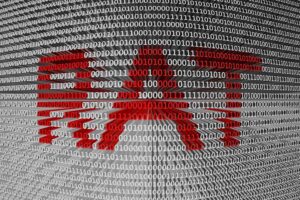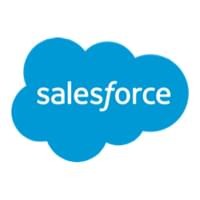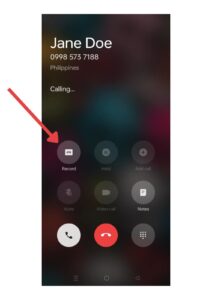Monitoring air quality, temperature and other measures, and providing data to employees will give them the confidence to return, according to Schneider Electric.

Image: iStock/prostockstudio
Eventually, people will be going back to the office, whether full- or part-time. But they want reassurances that the structures they are in are healthy and safe.
The buildings of the future will maximize space efficiency, enhance occupant well-being, improve the employee experience and reduce operating costs, Schneider Electric officials said during a webinar Wednesday discussing how to improve workspaces.
They will also be sustainable (low to zero carbon and return resources back to the planet), resilient (the ability to withstand crises and plan for them and bounce back) and hyper-efficient (seamlessly controlled by an end-to-end platform), company officials said.
Most buildings were built before 1980 and they will need to be redesigned to become more digital and flexible so they are future-ready for whatever the next normal is, said James Mylett, senior vice president of digital buildings, at Schneider Electric.
SEE: COVID-19 workplace policy (TechRepublic Premium)
“The reality is, you’re probably going to need less real estate. We’ve just been through the largest work from home exercise ever done and people figured out how to make it work, but people want to be connected with people physically,” Mylett said. “But they want to come back safely.”
Healthy buildings are assets and people spend the majority of their time in them at work, according to Schneider Electric.
The company officials maintain that the ROI to reconfigure them is there: Healthier buildings mean 3.5 fewer sick days, lower health insurance costs and a 101% increase in cognitive scores in well-ventilated environments.
There is also higher employee confidence and loyalty and a 20% increase in rental premium potential, the officials said.
How to bring back workers
The firm, which has over 19,000 employees in the U.S., has revamped its Nashville Hub to ensure air is well ventilated. Officials have gotten feedback from their staff that over half miss in-person interactions, and that 90% are excited about reuniting with coworkers.
But the question becomes, how to incent people to return to the workplace?
“It starts with transparency,” Mylett said. That means improving a building’s “health score” to ensure it is set at the right temperature, and also monitoring the air movement as well as noise, lighting levels and cleanliness. To do that, you have to be able to organize data from the sensors you have in place to be able to make decisions, he said.
See: How to choose an IoT platform when there are so many options (TechRepublic)
However, a building’s occupants typically don’t have access to the health and well-being data to monitor these factors, Mylett said. “We’re seeing people want visibility on health, which goes back to transparency.
Tony Johnson, site leader of Schneider Electric’s Nashville Hub, said it is the company’s largest office complex in North America with 1,000 employees. Schneider Electric does not own or manage the three-year-old building, Johnson added.
Yet, the company occupies five and a half of the building’s 10 floors and has over 1,000 connected devices from which it collects and analyzes data.
“It shocked me how much information is available to be translated that we don’t leverage effectively,” Johnson said.
Funky furniture
One of the things Schneider Electric wanted to glean from the data was space utilization—how frequently a desk is being used, as well as the number of occupants on a floor or in a conference room at any given time. That is useful information to have for design purposes, he explained.
One of the conference rooms in Nashville had a “funky furniture” configuration with a piece of furniture employees dubbed “the Star Trek table.” With its Workplace Advisor app, Johnson learned the room wasn’t getting a lot of use and he discovered it was because it was not a traditional table and not “appropriate for a conference room. So we swapped it out and saw utilization jump back up,” he said. “We didn’t tell anyone, just changed it and people started using it again.”
The Nashville Hub has a “free address environment” so that employees can use whatever workstation they want. Prior to the pandemic, the app also informed Johnson that some workstations were getting zero usage.
“It didn’t make any sense. I decided to use them and it turned out the technology … didn’t work” and no one had said anything, he said. “It was an easy problem to resolve and also made us aware we needed a process for employees to comment in a ticket system.”
He admitted that prior to COVID, “I never imagined in this role I’d be thinking about safety and security and the health of employees.” Workplace Advisor constantly measures those parameters and recognizes when there is a problem, he said.
One of the “coolest stories” that came out of using the app had to do with the CO2 levels in one of the conference rooms in 2019 when the company had been in the building for a year. The conference room was designed to hold 20 people and one week, there were closer to 30 people using it.
“What we discovered was there was a serious issue with the ventilation of the room,” Johnson said. The facility managers had set the temperature systems to be stagnant at night, so there was very little airflow and the room was never able to completely catch up during the day, creating an unhealthy situation, he said.
“We were depriving them of oxygen. Cognitive ability diminishes in that scenario,” Johnson said.
Schneider Electric officials met with the facility managers, “and with no capital outlay, we were able to flatten the line significantly,” he said. “We were getting more fresh air in the space and it made a huge difference.”
Improving the employee experience
Johnson said employees at the Nashville Hub now have this data. This helps them find an open workstation, communicate with coworkers and get notified when they have a package in the mailroom or a visitor at the concierge desk.
“It’s employee-centric and gives them tools they need to be productive every day,” he said.
Right now, half of the employees in Nashville “have raised their hand to come back” and on average, 10% are coming into the office every day, Johnson said. The app lets him monitor the data to adjust for more employees and determine what areas might need enhanced cleaning or contact tracing, if necessary.
“At the end of the day, we know employees want to come back, but they want assurances we’ll provide them with a safe and healthy place to operate,” he said. “We can give them the data, which provides that reassurance.”
Also see
Source of Article




